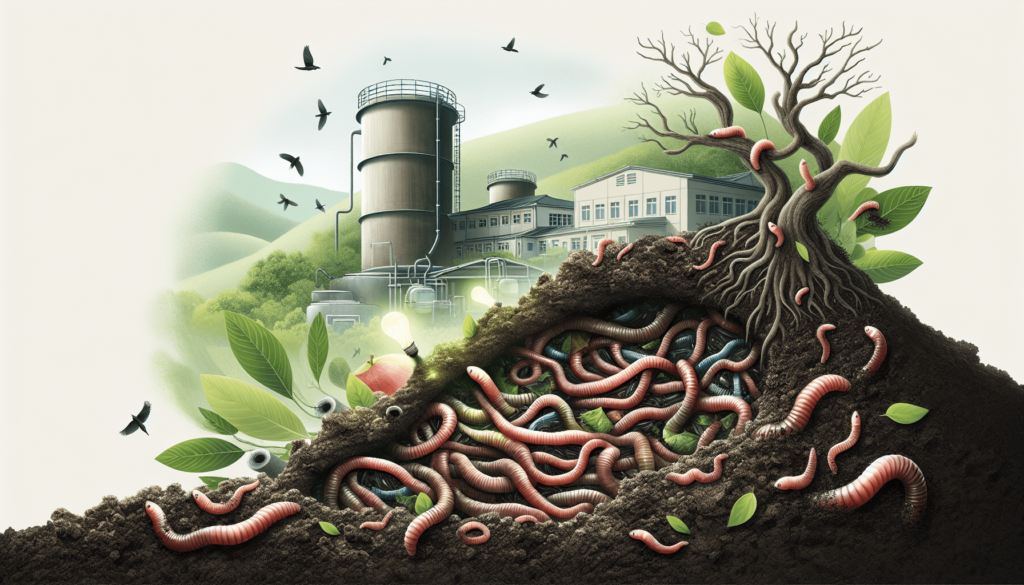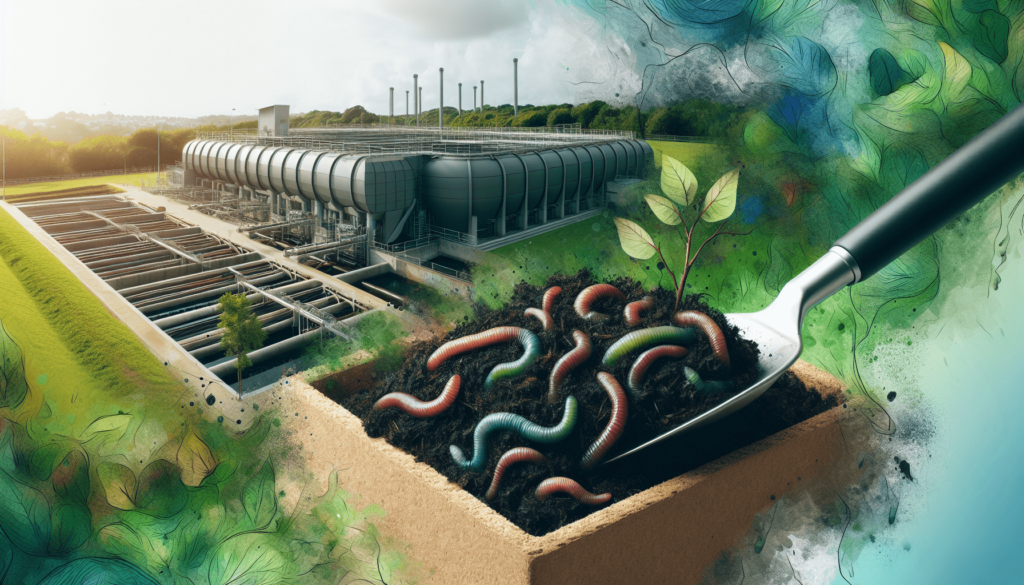
Have you ever wondered about the challenges associated with disposing of sludge from wastewater treatment plants? Sludge disposal is a critical aspect of wastewater management that poses significant environmental and economic challenges. Conventional methods often fall short in terms of sustainability and efficiency. However, with growing attention on eco-friendly practices, vermicomposting has emerged as a promising alternative for managing this sludge sustainably.
Understanding Sludge from Wastewater Treatment
Sludge is a byproduct of the wastewater treatment process. It consists of a variety of organic and inorganic materials that are removed during the purification of water. This waste material needs to be disposed of in a manner that is environmentally responsible and complies with regulatory standards. The increasing volume of sludge generated annually exacerbates the challenge, with disposal becoming both a critical and complex problem.
Composition of Sludge
Sludge primarily contains water, organic matter, nutrients, pathogens, and heavy metals. The composition can vary significantly depending on the source and treatment process. Generally, it is classified into two types: primary and secondary sludge. Primary sludge is mostly solids settled during the initial stages of treatment, while secondary sludge comprises biological solids derived from microbial activity.
Environmental Impacts of Traditional Sludge Disposal
Traditional methods of sludge disposal include landfilling, incineration, and land application. While each method has its merits, they also pose significant environmental risks. Landfilling requires vast amounts of space and releases methane, a potent greenhouse gas. Incineration, though reducing sludge volume substantially, can lead to air pollution through the emission of hazardous gases unless robust filtering systems are employed. Land application may introduce heavy metals and pathogens into the soil, potentially affecting plant, animal, and human health.
Introduction to Vermicomposting
Vermicomposting is the process of using earthworms to decompose organic waste into nutrient-rich compost. It is a method that replicates and enhances the natural decomposition process. This technique leverages the biological activity of worms to transform sludge into valuable humus, offering a sustainable alternative to traditional disposal methods.
The Science Behind Vermicomposting
Vermicomposting relies on specific earthworm species, such as Eisenia fetida and Lumbricus rubellus, known for their ability to consume and process organic matter efficiently. The worms feed on the sludge, breaking down the organic compounds into simpler substances. The resulting vermicompost is rich in minerals, beneficial microorganisms, and stable organic matter, making it an excellent soil amendment.
Benefits of Using Vermicomposting
Opting for vermicomposting presents numerous advantages over conventional sludge disposal methods:
- Sustainability: Vermicomposting reduces the environmental footprint by transforming waste into a valuable resource.
- Economic Viability: It minimizes the need for costly disposal and treatment processes.
- Reduced Pollution: This method limits the release of greenhouse gases and harmful pollutants.
- Soil Enrichment: The end product enhances soil fertility and structure, promoting healthy plant growth.
Implementing Vermicomposting for Sludge Disposal
Employing vermicomposting as a method for sludge disposal involves several key steps. Understanding these steps is vital for wastewater treatment facilities considering this transition.
Selecting the Right Earthworms
Choosing the appropriate earthworm species is crucial. Species common in vermicomposting are known for their resilience and capacity to process organic matter quickly. Eisenia fetida (commonly known as red wigglers) are particularly effective given their adaptability to varied environments and high reproductive rates.
Preparing Sludge for Vermicomposting
To optimize the vermicomposting process, the sludge must be conditioned properly. This preparation involves adjusting its moisture content, particle size, and mixing it with a suitable bulking agent like straw or sawdust to enhance aeration and facilitate easier breakdown by the worms.
Designing the Vermicomposting System
A well-designed vermicomposting system is essential for efficiency and scalability. These systems can range from simple bin setups to large-scale continuous flow reactors. Facilities must consider factors like temperature control, moisture regulation, and aeration to maintain optimal conditions for worm activity.
Challenges and Considerations
While vermicomposting offers significant advantages, it is not without its challenges. Facilities must carefully consider various factors to ensure the success of their vermicomposting initiatives.
Managing Contamination
Industrial sludge may contain pollutants and heavy metals that can be detrimental to both earthworms and the quality of the resulting vermicompost. Regular monitoring and pre-treatment of sludge are necessary to minimize contamination risks.
Balancing Nutrient Content
Achieving and maintaining the right balance of nutrients within the vermicomposting system is critical. Too much of a particular element might hinder worm activity or affect the quality of the compost. Periodic testing and adjustments may be necessary to sustain an optimal nutrient mix.
Scaling Up Operations
Scaling vermicomposting operations for larger facilities requires substantial investment in infrastructure and expertise. It may also necessitate partnerships with agricultural sectors or markets for the produced vermicompost to ensure an economic return on investment.

Case Studies: Successful Vermicomposting in Action
To illustrate the effectiveness of vermicomposting in sludge disposal, examining real-world applications offers valuable insights.
Case Study 1: Municipal Wastewater Treatment Plant
A municipal wastewater treatment plant in India implemented vermicomposting to manage its sludge load. The facility reported a significant reduction in disposal costs and found a sustainable use for the vermicompost in local agriculture, enhancing soil fertility and crop yields.
Case Study 2: Industrial Park Collaboration
In an innovative approach, an industrial park collaborated with a nearby agricultural institute to process its sludge through vermicomposting. The project not only transformed waste into a useful resource but also contributed to the local community’s sustainable agriculture practices.
Analyzing the Outcomes
Both cases underscore the potential for vermicomposting to address sludge disposal problems sustainably. The benefits extend beyond environmental gains, encompassing economic and community development opportunities.
Regulatory and Safety Considerations
For successful implementation, facilities must navigate the regulatory landscape and ensure the safety of the vermicomposting process.
Regulatory Framework
Compliance with national and local regulations concerning sludge treatment and disposal is essential. Understanding the legal requirements and receiving necessary permits ensures the operation aligns with environmental standards.
Ensuring Worker Safety
Worker safety is paramount in vermicomposting operations. Proper training in handling raw sludge, personal protective equipment, and knowledge of potential biohazards are necessary to prevent health risks associated with pathogens and pollutants.
Future of Vermicomposting in Waste Management
The future of vermicomposting in sludge disposal looks promising. As the environmental and economic pressures of sludge disposal increase, vermicomposting’s role is likely to expand.
Innovations and Technological Advancements
Technological innovations promise to improve vermicomposting efficiency and scalability. Emerging technologies in automation, monitoring, and control may revolutionize how vermicomposting systems are designed and operated, making them more viable for large-scale applications.
Potential in Circular Economy
Vermicomposting aligns with circular economy principles by turning waste into a resource. The growing interest in these principles across sectors provides a fertile ground for further integration of vermicomposting in systemic waste management solutions.
Conclusion
Vermicomposting presents a viable and sustainable method for managing sludge from wastewater treatment plants. By transforming waste into a valuable resource, it addresses both environmental and economic challenges associated with traditional sludge disposal methods. Although there are challenges to overcome, the benefits of vermicomposting in terms of reduced pollution, lower costs, and enhanced soil health make it an attractive option for the future of sustainable waste management. As technology advances and awareness grows, vermicomposting could significantly reshape the landscape of wastewater sludge disposal.